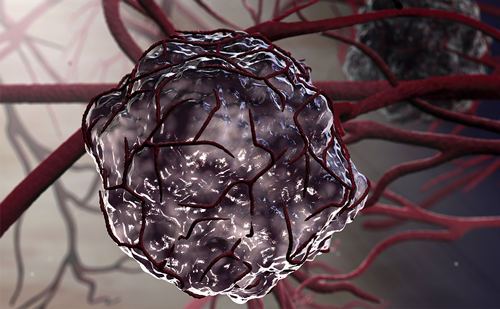Each June, at the oral sessions of the annual American Society of Clinical Oncology (ASCO) meeting, the ASCO Program Committee’s top ranked abstracts are presented and subjected to expert commentary. These sessions frequently signal the latest directions along which research is evolving and may set new practice standards. At the 2016 meeting, researchers spoke to two dominant themes in the session on colorectal and anal cancer: harnessing immunotherapy for treatment of both colorectal and anal primary tumors and the relevance of the site of the primary colorectal tumor on both prognosis and prediction of treatment responses to targeted therapy. The presentations on immunotherapy promise the potential for future Food and Drug Administration (FDA) approvals for PD-1 inhibitors for indications in gastrointestinal (GI) cancers and they illustrate the need for verification of early results through larger confirmatory trials for combination immunotherapy protocols. The presentations on “tumor sidedness” contain information that is closer to or ready for integration into clinical practice, depending on an individual’s viewpoints.
Dr. Cathy Eng from MD Anderson Cancer Center presented data from a multicenter Phase II trial sponsored by Bristol Myers Squibb (BMS) and charitable donations in which patients with advanced, chemotherapy refractory, anal cancer were treated with the programmed death 1 (PD-1) inhibitor, nivolumab.1 In this study, 37 patients received treatment and 24% had a response while 46% manifested stable disease with a median overall progression free survival (PFS) of 4 months. This is a rare tumor which, when recurrent, has limited chemotherapy options and these tumors are commonly associated with human papilloma virus (HPV) infection. PD-1 inhibitors are active in head and neck cancer which is also HPV associated suggesting broad potential for this approach in virally mediated cancers.2 The findings suggest the possibility that there will soon be expanded FDA approved options for patients afflicted with this disease.
Dr. Michael Overman presented the interim results of a BMS sponsored Phase II study, known as CheckMate 142, using nivolumab (a PD-1 inhibitor) with (in 30 patients) or without (in 70 patients) ipilimumab (an anti-CTLA-4 antibody), with either microsatellite instability high (MSI-H) or MSI stable (MSS) metastatic colorectal (mCRC) tumors.3 The MSS cohorts had only preliminary results and are not discussed further. The objective response rates (ORR) on nivolumab monotherapy in patients with MSI-H tumors was 25.5% and the stable disease rate was 29.8% with a PFS of 5.3 months. In the combination therapy arm the partial response rate in the patients with MSI-H tumors was 33.3% and 51.9% had stable disease. The median PFS had not yet been reached. Toxicity was tolerable but more severe in the combination therapy cohort as expected. This study confirms the activity of PD-1 inhibition in MSI-H patients and provides preliminary data on the potential for augmented activity with combination immunotherapy. Large studies are needed to better delineate that finding.
Dr. Johanna Bendell presented outcomes from a Phase Ib, multicenter, Genentech sponsored, cohort expansion study of the combination of cobimetinib (a Mek-1 and -2 inhibitor) and atezolizumab (a PD-1 inhibitor).<>sup>4 These investigators treated 23 mCRC patients whose tumors were MSS and who had previously received a median of three lines of chemotherapy. The dose expansion study was for patients whose tumors harbored KRAS mutations. There was a 35% rate of grade ≥3 toxicities including mainly diarrhea and other GI toxicities. The overall response rate was 17% and did not correlate with PD-L1 staining. The median PFS was not yet reached and 72% of patients were alive at 6 months from treatment initiation. The sponsor is now conducting a Phase III trial in a similar cohort of chemotherapy refractory patients with mCRC. The finding that this combination had efficacy with manageable toxicity in RAS mutated MSS tumors grabbed the attention of the clinical community and patients with refractory disease looking for more options.
At this juncture there are several important conclusions that can be drawn from the increasing database available on immunotherapy in colorectal and anal cancer. First there is activity in both MSS and MSI-H mCRC tumors. Second there are many patients that manifest prolonged progression free intervals even without Response Evaluation Criteria In Solid Tumors (RECIST) validated partial responses. Additionally, toxicities with the immune stimulatory agents are quite distinct from those seen with classical antineoplastic agents as well as with other targeted therapies. The activity observed across primary tumor types in the GI tract and elsewhere is heartening. Ongoing studies coupling immunotherapy and chemotherapy will help further delineate the best ways to deploy these new tools in our therapeutic armamentarium.
There were three presentations that focused on the differences in outcomes related to tumors that originated in the ascending and tranverse colon (right sided) versus those in the descending colon or rectum (left sided). The first of these presentations by Dr. Alan Venook was a retrospective look at patients treated on the CALGB/SWOG 80405 trial that randomized previously untreated patients with mCRC to doublet chemotherapy (either oxaliplatin or irinotecan with 5-fluorouracil) coupled with either cetuximab or bevacizumab.5 Outcomes were not different between treatment arms (PFS 11.3 versus 11.4 months and overall survival [OS] 31.2 versus 32.0 months) so the patients were pooled and divided into cohorts based upon whether their tumors originated on the right (n=293) or left side (n=732) of the colon and their median PFS and OS statistics were compared. The group with left-sided primary tumors had a median OS of 33.3 months compared to 19.4 months for right-sided primaries (hazard ratio [HR] 1.55, 95% confidence interval [CI] 1.32-1.82, p<0.0001). Analysis by treatment arm indicated patients with left-sided tumors treated with cetuximab plus FOLFOX or FOLFIRI in the first line fared best, with a median OS of 36.0 months compared with a median OS of 16.7 months for those with right-sided tumors (HR 1.87, 95% CI 1.48-2.32, p<0.0001). Patients who had received first line bevacizumab in combination with chemotherapy had an intermediate OS but the site of the primary was still an important factor, with left-sided patients achieving a median OS of 31.4 months and rightsided patients achieving a median OS of 24.2 months (HR 1.32, 95% CI, 1.05- 1.65, p=0.01). To put this into context, data from FIRE-3 (first-line FOLFIRI and either cetuximab or bevacizumab in RAS wild-type mCRC patients) were referenced.6 Updated data show an OS advantage for patients on the cetuximab arm in the primary analysis of FIRE-3, and also confirm the prognostic biomarker of sidedness, with results very similar in both magnitude and direction to CALGB/SWOG 80405.
Dr. Deborah Schrag presented Survey of Epidemiology and End Results (SEER) population-based data comparing OS for 65,000 stage IV CRC patients by tumor location.7 She noted a median OS advantage for those patients with left-sided (median OS = 15.5 months) versus for right tumors (median OS = 9.5 months). Patients with left-sided stage III CRC also had a median OS advantage compared to those with right-sided tumors in this analysis, but this advantage was not as striking as the difference observed in the stage IV patients.
Dr. Michael Lee and his team at MD Anderson evaluated molecular heterogeneity among colon cancers and its relevance to the side of origin in a cohort of 198 KRAS wild type mCRC patients with archival tissue and clinical follow-up available from that center.8 He reported that patients with right-sided tumors had a lower median OS and those tumors were more likely to contain poor prognosis BRAF mutations, exhibit hypermethylation (CpG-island methylator phenotype [CIMP]-high), and be MSI-H than do left-sided tumors. Additionally right and left sided tumors harbor distinct gene expression patterns with differing frequencies of the four consensus molecular subtypes (CMS) as delineated by Guinney et al. (CMS 1: Immune subtype, CMS 2: Canonical suptype, CMS 3: Metabolic subtype, and CMS4: Mesenchymal subtype).9 Patients with right sided tumors who received epidermal growth factor receptor (EGFR) directed monoclonal antibodies had an inferior response rate and PFS compared to the cohort of patients with left sided tumors.
The combination of data from a clinical trial, from the SEER cohort, and from a single institutional cohort with extensive genotyping lends credibility to the difference in prognosis between right and left sided tumors. Additionally the data on differential benefits from treatment with combination chemotherapy coupled to cetuximab or bevacizumab as a function of the site of tumor origin suggest the potential predictive value of this finding. While the investigator community has been careful not to overstate their level of confidence in the evidence from a retrospective ad hoc review, in the clinic, first line use of an EGFR targeted monoclonal antibody in combination with multidrug chemotherapy in patients with previously untreated mCRC deserves consideration. Clearly the intensive investment in both new drug development and in the extraction of data from clinical trials for additional analyses beyond those pre-specified in the primary protocol is leading to advances in the everyday management of patients in our clinics.







